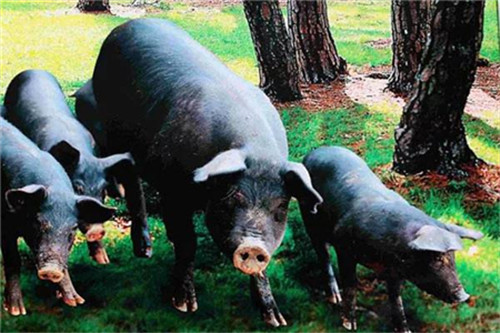What if piglets get sick? It is suitable for intraperitoneal injection!
Compared with oral administration and intravenous injection, intraperitoneal injection is slow in absorption; intravenous injection is used in pigs, which is difficult to needle because of fine venous vessels and great stress to the heart; intraperitoneal injection is used because of large peritoneal area, dense blood vessels and lymphatic vessels, strong absorptive capacity, short time and fast speed of intraperitoneal fluid replacement, which is safe, time-saving and labor-saving for small pigs. Drugs such as enrofloxacin, ciprofloxacin, gentamicin and kanamycin can be added to the injection solution to cure both the symptoms and the root causes.
Adaptive symptoms
First, acute, mass venereal diseases, quick efficacy, short time-consuming, easy to rescue, such as pig poisoning, diarrhea and dehydration.
Second, in the later stage of pig disease or severe respiratory failure, heart failure needs rehydration and can not stand long-term intravenous stress, such as porcine asthma.
Third, if the pig's body temperature decreases, it needs rehydration and physical heating in the body, such as suckling pig suffering from cold.

Fourth, pig castration and other causes of peritonitis and intestinal inflammation.
Fifth, the time difference of drug absorption is caused by various reasons in the intramuscular injection site of son pigs.
Operation method
The pig was injected intraperitoneally, using inverted Baoding, and the assistant lifted the pig upside down, the ventral side facing the injector, and the legs clamped the shoulder of the pig. Between the penultimate row of nipples and the third row of nipples, needles are inserted on both sides 2-3 cm from the midline of the abdomen, and the abdominal wall is pierced at an angle of 90 degrees into about 3 cm. After piercing the abdominal wall, the needle resistance disappears, and there is no blood and abdominal cavity content, then the medicine can be injected. In order to facilitate the operation, the injection needle can be injected intravenously with a rubber tube needle, or it can be dripped directly into the infusion bottle. For the sick pigs whose weight is slightly heavier, Baoding can be carried out on the side, the injection site is on both sides, the needle is injected vertically, and the needle is drawn back after the injection to see if the blood and abdominal contents are returned, and then injected. It should be noted that inverted Baoding injection is the safest injection position.
Points for attention
First, the position of rehydration should avoid the midline of the abdomen, especially the boar, so as not to hurt the penis.
Second, the liquid used for rehydration must be isotonic solution such as 5% glucose solution and 0.9% sodium chloride solution, not hypertonic solution, otherwise it will aggravate dehydration. Irritant liquids, such as calcium chloride and sulfonamides, cannot be injected intraperitoneally to avoid peritonitis and tissue necrosis.
Third, oil emulsion, precipitated drugs and semi-solid drugs are not suitable for intraperitoneal injection.
4. The liquid of rehydration should be heated to about 37 ℃.
Sixth, keep the pig firmly in order to avoid scratching the intestines, liver and kidney during the struggle.
- Prev

How should sow uterus inflammation be prevented and treated?
How should sow uterus inflammation be prevented and treated?
- Next

A brief discussion on the measures of Animal epidemic Prevention in Grass-roots Animal Husbandry and Veterinary Medicine
A brief discussion on the measures of Animal epidemic Prevention in Grass-roots Animal Husbandry and Veterinary Medicine
Related
- On the eggshell is a badge full of pride. British Poultry Egg Market and Consumer observation
- British study: 72% of Britons are willing to buy native eggs raised by insects
- Guidelines for friendly egg production revised the increase of space in chicken sheds can not be forced to change feathers and lay eggs.
- Risk of delay in customs clearance Australia suspends lobster exports to China
- Pig semen-the Vector of virus Transmission (4)
- Pig semen-the Vector of virus Transmission (3)
- Five common causes of difficult control of classical swine fever in clinic and their countermeasures
- Foot-and-mouth disease is the most effective way to prevent it!
- PED is the number one killer of piglets and has to be guarded against in autumn and winter.
- What is "yellow fat pig"? Have you ever heard the pig collector talk about "yellow fat pig"?

